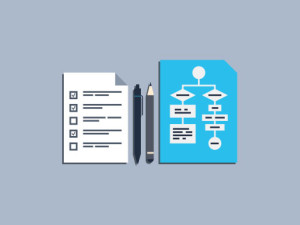Target Audience
Survey Parameters vary based on the firm and the purpose of the survey. The survey can target a random sample within a specific customer segment, target a random sample of all customers, target all customers relative to a specific product/service set, or target customers with recent interactions. Firms may conduct non-responder surveys as well to compare results to customers who have recently interacted/responded.
Scope of Survey
This varies again by firm but can address recent interaction satisfaction with a recent contact, satisfaction with an offering (product/service), satisfaction/loyalty with the enterprise, or it can be an exploration of customer requirements.
Survey Frequency
This varies from daily to annually. Volume is a driver here—the fewer the surveys completed, the longer the timeframe for sampling to build sample size and statistical validity. Quarterly surveys at the enterprise and business unit level are common with firms also conducting monthly and daily surveys. At the quarterly and monthly level for enterprise surveys, we frequently see 300-400 surveys completed. On the daily level, the volumes can be much higher particularly if automation is used, with post-interaction surveys generating 5% to 20% response rates.
Multiple firms complete post-call IVR surveys and publish daily which is very cost effective (e.g., Hilton and AT&T). Firms with customer email addresses, particularly Internet Service Providers (ISP) and telecom or online retail firms, conduct and publish results of email surveys on a daily basis (e.g., AT&T, EarthLink). Airlines use a formal written survey called a Quarterly Inflight Survey (QIF) that is distributed, completed, and returned while the passenger is inflight. Firms across multiple industries conduct daily surveys publishing results monthly or quarterly (e.g., Southern Company, FedEx, First Data). One of the challenges in smaller sample sizes completed daily is the age of the data. If feedback is two to three months old, it may not be as actionable as immediate feedback.
Media
Again, this varies by firm, but some of the media options utilized include:
- Post-call, transferred to an IVR (Hilton does this brilliantly using the post-call transfer to summarize the stay information and give the confirmation number before segueing into the survey)
- IVR based on customer calling in (800 number on purchase receipt with retail clerk promoting the survey)
- Chat (post chat with functionality included in the Chat application)
- Phone, conducted by a third party live agent (First Data, Wells Fargo, AT&T; FedEx, and Green Dot)
- Email (EarthLink, American Airlines)
- Kiosk
- Mail (historically a mainstay of the automotive industry)
- Online for web experience
- In person (e.g., airline QIF surveys distributed inflight)
The approach may vary for groups within the same firm with some divisions/business units having objectives that differ from an enterprise survey.
Questions/Response Scales
Questions and response scale vary significantly the following used most commonly:
Ten point scale response to a question:
- Questions and response scale vary significantly the following used most commonly:
- Ten point scale response to a question:
- Descriptive or qualitative scale describing a product/service feature (“unacceptable” to “excellent,” phrasing may vary)
- Customer behavior forecast such as tendency to use or likely to recommend scale (“will not” to “highly likely”)
- Satisfaction scale measuring customer satisfaction with an overall product/service or with a feature of the product/service (“highly dissatisfied” to “highly satisfied”)
- Five point scale using the same approach as above
- Eleven point Net Promoter Score (NPS) where the top two responses (9 and 10) are viewed as promoters, the next two (7 and 8) are considered neutral, and the final seven (0 through 6) are viewed as detractors. Score is calculated by subtracting detractors from promoters.
- Four or five point agreement scale (also known as Likert)
- Strong positive statement following by a negative to positive scale
- Scale options:
- Strongly disagree, disagree, agree, strongly agree
- Strongly disagree, disagree, neither disagree nor agree, agree, strongly agree
- Multiple choice scale with a question followed by yes/no, true/false, or multiple options from which a customer selects (e.g., when asking about the amount of time the call took: too much time, about as long as I expected, less time than I expected). Example below.
There are a myriad of other scales and question types but these are the most common.
It is important to note that while a ten point scale is commonly used, it asks for a level of granularity in rating that some customers find confusing. Most firms using a ten point scale condense responses to “top two boxes” and in doing so essentially convert the survey to a five point scale. NPS converts eleven possible ratings to a three option scale (promoter, detractor, neutral) with the final score calculated using the promoter, detractor scores.
Benchmark Surveys
Satmetrix does an NPS benchmark survey each year and publishes industry/sector leaders. Forrester does a Customer Experience Index which is allegedly correlated to NPS and published each year. Copies of both will be sent separately.





